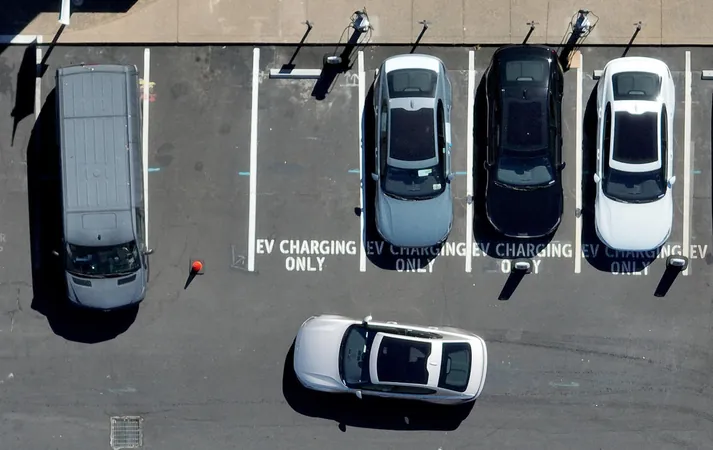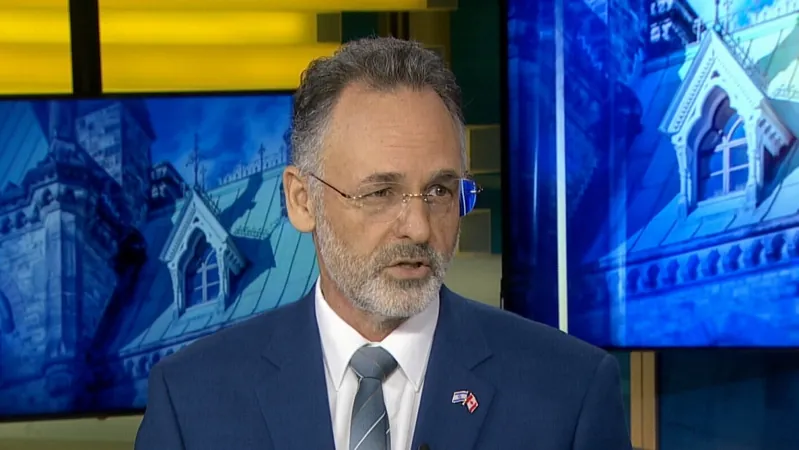
Canada’s Electric Vehicle Market Booms, But Will Subsidy Cuts Stunt Growth?
2024-10-04
Introduction
Canada's electric vehicle (EV) market is experiencing remarkable growth, but experts warn that halting subsidies for zero-emission vehicles (ZEVs) could lead to a serious slowdown. A new report from TD Economics emphasizes the urgent need for governments at both federal and provincial levels to reevaluate their plans to phase out these financial incentives.
Subsidies and Market Growth
The TD report, authored by economist Likeleli Seitlheko and research analyst Mekdes Gebreselassie, highlights that subsidies have been instrumental in increasing ZEV market share in Canada from virtually nothing a few years ago to over 12% in the first half of this year. However, cautionary tales from the U.K. and Germany, who have recently ended incentives, point to potential pitfalls, including stalled growth and possible reversals.
International Comparisons
In the U.K., following the removal of grants for individual buyers, the market has seen a shift — while corporate fleets continue to buy ZEVs thanks to available incentives, individual sales have plummeted. Germany is witnessing similar struggles; the withdrawal of subsidies for plug-in hybrids led to an astonishing 50% drop in their sales, contributing to a 16% decrease in total ZEV sales, marking the first decline since records began in 2010.
Canadian Federal and Provincial Incentives
In Canada, the federal incentive of up to $5,000 is set to expire on March 31, 2025, and most provinces, excluding Alberta and Saskatchewan, have fixed end dates for their rebate programs. For example, Quebec's generous $7,000 rebate will be halved at the end of this year and completely cut by the end of 2026.
Challenges to ZEV Adoption
Experts indicate that the greatest obstacle to ZEV adoption lies in the reduction of these incentives. Jimmy Hearn from S&P Global Mobility points to British Columbia, where recent adjustments to the province’s rebate program — including income-based eligibility and limitations on qualifying vehicle prices — have led to slower growth in ZEV sales.
Restructuring Incentives
However, the TD report suggests that rather than eliminating rebates entirely, they could be restructured to support lower-income individuals who may struggle with the initial costs of ZEVs. This discussion highlights the importance of maintaining incentives as a key driver of market growth.
Provincial Leaders in ZEV Sales
British Columbia and Quebec continue to lead the charge in Canada’s EV landscape, accounting for nearly triple the market share of provinces like Ontario and Prince Edward Island (P.E.I.). The report reveals that, prior to Ontario's withdrawal of its EV rebate in 2018, ZEV registrations in the province were on par with Quebec's. Following the policy change, Ontario's sales diverged sharply, remaining consistently lower.
Market Share and Sales Mandates
In the past five years, British Columbia and Quebec accounted for over 60% of ZEV sales in Canada while representing only 36% of the population. Both provinces have also spearheaded efforts to expand charging infrastructure and have instituted sales mandates that encourage car companies to maintain adequate stock, further boosting consumer choice.
Impact of Pricing on Adoption
One critical aspect of ZEV adoption is pricing. Analysis of the Hyundai Kona—both gas and electric versions—illustrates the impact of government rebates on consumer purchasing decisions. Although gas-powered vehicles have a lower sticker price, the significant fuel savings over time can offset the initial investment in an EV. Without rebates, the break-even point for consumers in Vancouver would take up to six years, compared to ten years in Calgary. However, with government incentives, payback times shrink to one year in Vancouver and under six years in Calgary.
Future Considerations
Despite recent improvements in affordability, battery-electric vehicles remain about 31% more expensive than their gas-powered counterparts, while plug-in hybrids cost 23% more. The report also highlights the scarcity of ZEV options priced below $30,000, making it difficult for many consumers to transition.
Conclusion
As Canada sets ambitious targets for the future of zero-emission vehicles, the upcoming decisions on subsidies will be crucial. Experts warn that sustaining the current growth levels will be challenging without maintaining financial support for buyers. Will Canada heed these warnings, or could the market face a major setback? Stay tuned!









 Brasil (PT)
Brasil (PT)
 Canada (EN)
Canada (EN)
 Chile (ES)
Chile (ES)
 España (ES)
España (ES)
 France (FR)
France (FR)
 Hong Kong (EN)
Hong Kong (EN)
 Italia (IT)
Italia (IT)
 日本 (JA)
日本 (JA)
 Magyarország (HU)
Magyarország (HU)
 Norge (NO)
Norge (NO)
 Polska (PL)
Polska (PL)
 Schweiz (DE)
Schweiz (DE)
 Singapore (EN)
Singapore (EN)
 Sverige (SV)
Sverige (SV)
 Suomi (FI)
Suomi (FI)
 Türkiye (TR)
Türkiye (TR)